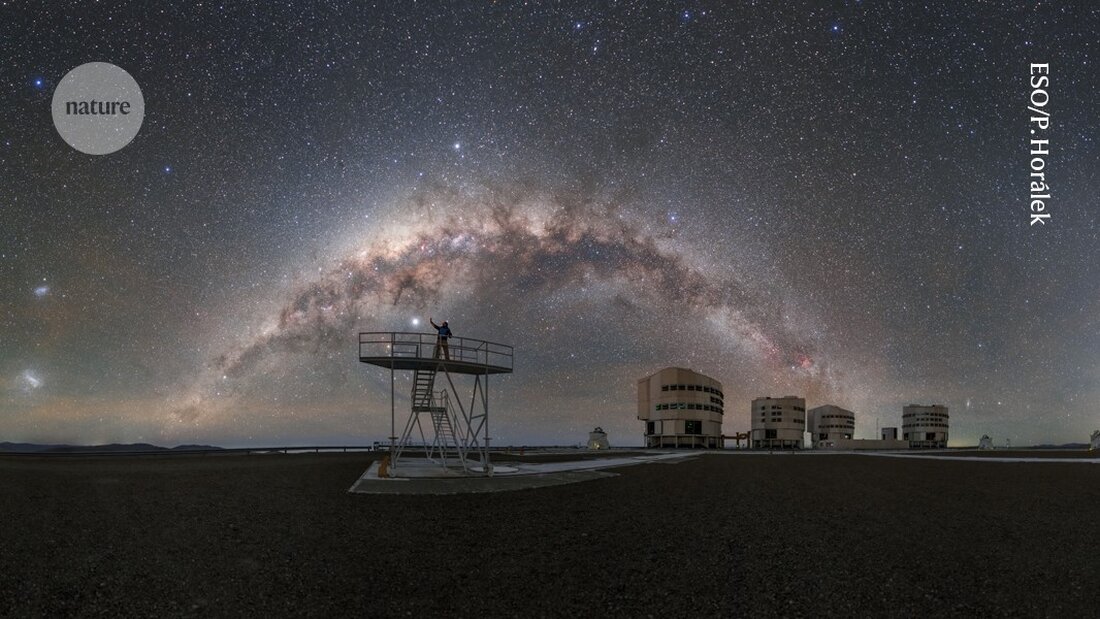Light pollution threatens world-class telescopes in the Atacama Desert
Light pollution from a planned hydrogen plant in Chile threatens world-class telescopes in the Atacama Desert.

Light pollution threatens world-class telescopes in the Atacama Desert
A massive one Green hydrogen plant, which is to be built in Chile, could cause light pollution one of the most powerful telescopes in the world increase by at least a third, reports the European Southern Observatory (ESO), which operates the telescope and will either house or operate others being built nearby.
An analysis from ESO published on Monday revealed that light pollution at the Very Large Telescope (VLT) - one of the world's most advanced optical telescopes - and at the southern array under construction of the Cherenkov Telescope Array Observatory (CTAO) would increase by at least 55%. The analysis also found that the project would increase atmospheric turbulence at the telescopes, causing vibrations that could damage the sensitive equipment.
These impacts would cause “devastating, irreversible” damage that cannot be mitigated, said astronomer Itziar de Gregorio-Monsalvo, the ESO representative in Chile, at a media briefing on Monday. “It will reach a point where it will most likely not be possible to operate these telescopes.”
Before the analysis was published, the developer of the green energy facility, AES Andes in Santiago, said that the project "aims to use the best technologies and the most stringent standards" and that a company analysis showed that the project would not have a "significant impact" on the observatories. On Monday, the company said in a statement: "We continue to work to collect data from the ESO document to understand the discrepancies between the ESO numbers and our own analysis."
Perfect conditions
The green energy project would cover 3,000 hectares in the Atacama Desert in Chile, the driest desert on earth. The arid climate and absence of clouds create ideal conditions for stargazing. The region also has extremely dark skies: a 2023 study 1 compared light pollution at 28 leading astronomical observatories worldwide and found that the Paranal Observatory, site of the VLT, had the darkest location, followed by the nearby Armazones Observatory, where the ESO Extremely Large Telescope (ELT) is building what the organization says will be “the largest visible and infrared telescope in the world.”
The Atacama's dark skies and other characteristics attracted organizations seeking to build state-of-the-art instruments such as the VLT, ELT and CTAO's southern array. “The darker the sky, the fainter the astronomical object under study may be,” emphasizes a summary of the ESO report on the green energy project.
Conditions in the Atacama also attracted energy company AES Andes, a subsidiary of AES Corporation in Arlington, Virginia. The company has proposed harnessing the region's intense sunlight and strong winds to generate solar and wind energy. These would provide energy for hydrogen extraction from water that could be taken from the nearby Pacific Ocean. Hydrogen produced using renewable energy is often referred to as green hydrogen.
AES has proposed building a green hydrogen complex that a port, ammonia and hydrogen production facilities, and thousands of electricity generators would include. The main unit of the project would be located 11 kilometers from the Paranal Observatory, 5 kilometers from the CTAO and 20 kilometers from the ELT.
Dueling numbers
ESO's latest analysis was conducted by Martin Aubé at the Center for Research in Astrophysics of Quebec in Sherbrooke, Canada, who studies light pollution at astronomical facilities, and by other researchers led by ESO Director of Operations Andreas Kaufer. It is based on information in the environmental report that AES submitted to the Environmental Assessment Service of Chile (SEA) in early January. The SEA will decide whether the AES project will be implemented.
ESO's analysis found that the increase in artificial light from the AES project would make it more difficult for instruments to distinguish between celestial bodies. “Increasing the brightness of the sky is like decreasing the size of telescope mirrors,” said Eduardo Unda-Sanzana, an astronomer at the University of Antofagasta in Chile.
-
Falchi, F. et al. Mon. Not. R. Astron. Soc. 519, 26–33 (2023).

 Suche
Suche
 Mein Konto
Mein Konto
